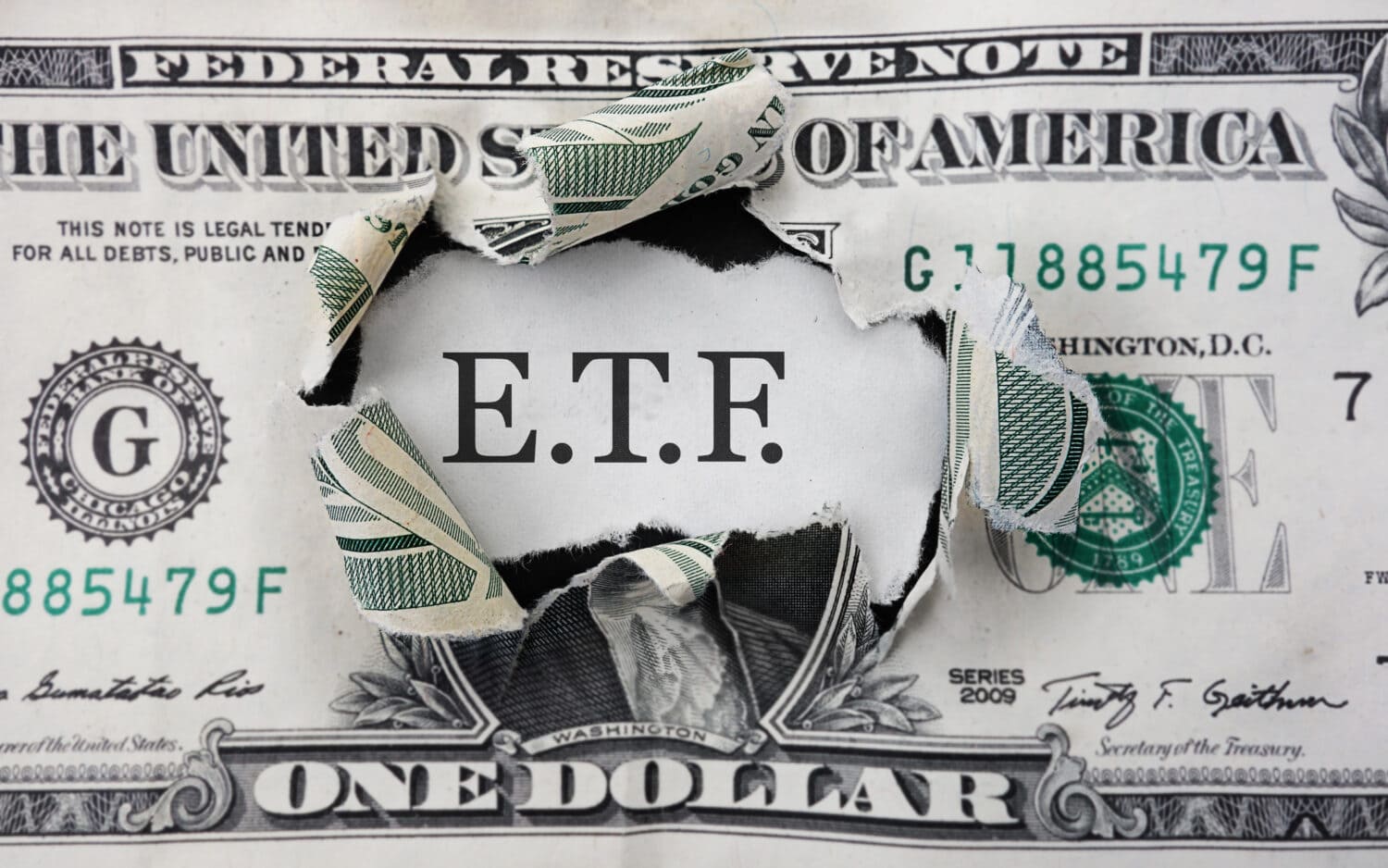

Many investors choose to invest in ETFs or mutual funds, which provide immediate diversification. These versatile “baskets” of securities offer a convenient way to gain exposure to many different market segments at once (or even the entire stock market).
However, with so many investing options available, choosing the right one has become more and more challenging. These investment vehicles have different strategies and goals, so selecting the one that aligns with your needs is important.
VTSAX and VOO are two popular choices. Despite historical performance favoring VOO, VTSAX’s inherent diversification across all US company sizes positions it as a more resilient option for navigating future market uncertainties, particularly for investors with a long-term horizon.
We’ll take a look at exactly how this breaks down below.
What is VTSAX?

Vanguard Total Stock Market Index Fund Admiral Shares (MUTF: VTSAX) isn’t the most popular mutual fund out there, but it’s great for those who want to invest in the stock market as a whole. Its primary objective is to track the performance of the CRSP US Total Market Index. This comprehensive index encompasses a vast universe of US companies, spanning all market capitalizations.
Unlike some funds that focus on one very specific sector or company size, VTSAX provides exposure to large, mid, small, and even micro-cap companies. This diversification across the entire stock market captures overall growth in the American economy.
VTSAX is designed with a long-term perspective in mind. By investing in a broad range of companies across many different sectors, it seeks to provide steady growth that mirrors the economy as a whole.
Simply put, VTSAX is a microcosm of the stock market as a whole. While it doesn’t move exactly like the stock market, it is very close.
What is VOO?

Vanguard S&P 500 ETF (NYSE: VOO) is exceptionally popular. It takes a more focused approach compared to VTSAX by tracking the performance of the S&P 500 Index. This index represents the 500 largest publicly traded companies in the United States and is widely considered a good indicator of how the economy is doing as a whole.
For the most part, VOO concentrates on established, large-cap companies with proven track records. These companies are industry leaders and are often considered safe investments.
VOO isn’t as comprehensive or broad as VTSAX, as it includes only large companies. However, holding the 500 most substantial companies captures the overall market movement very well.
In a nutshell, VOO offers a convenient way to invest in the powerhouse companies driving the US economy. It prioritizes stability and exposure to established players, making it a solid choice for investors seeking a more concentrated large-cap holding.
VTSAX vs. VOO: What Fund is Right for You?

Fees
Like most other funds, VTSAX and VOO have expense ratios. This fee pays for the fund’s management.
Currently, VOO has a fee of 003%. VTSAX has a slightly higher expense ratio of 0.04%. Ultimately, this very small difference won’t do much and shouldn’t play a huge role in which fund you choose to get.
However, if you invest a lot of money for several decades, this small fee could add up to a difference of thousands of dollars. It’s something to keep in mind as we continue to compare these funds.
Risk
To understand the risk profile of VOO and VTSAX, we need to discuss the concept of Beta. Beta measures the volatility of an investment relative to the overall market. A Beta of 1 indicates the investment moves exactly in line with the market, while a Beta greater than 1 suggests the investment experiences larger swings (both up and down) compared to the market.
VTSAX has a Beta of 1.01, which is just slightly more volatile than the market as a whole. VOO’s Beta sits right at 1.00, indicating it moves almost exactly as much as the market overall. Therefore, neither of these investments is incredibly risky, but VTSAX may have a bit more movement than VOO.
VTSAX’s higher Beta is likely due to its larger market exposure. It encompasses smaller companies that tend to be more volatile, while VOO specializes in large-cap companies only.
While VTSAX is a bit more volatile, it’s important to remember that this is due to increased diversification, which is also safer. If a bigger company, like Microsoft, were to dip dramatically, VOO would be impacted more than VTSAX due to its lower diversification.
Historical Performance
Historical performance is a tempting metric to look at when choosing between ETFs. After all, if an ETF did better in the past, it only makes sense that it would do better in the future, too, right? However, past performance isn’t always indicative of future results.
VOO has delivered historically strong returns, particularly during bull markets. By focusing on large-cap companies with established track records of growth, VOO can capitalize on periods of economic expansion better than VTSAX.
While VOO might boast higher peak returns, VTSAX often exhibits more consistent performance across many market conditions. Its broader diversification mitigates some of the volatility associated with larger companies, potentially leading to smoother returns for investors.
Here’s a breakdown of the return of each ETF:
| VOO | VTSAX | |
| 1-year | 28.15% | 27.61% |
| 3-year | 9.52% | 7.70% |
| 5-year | 15.76% | 14.90% |
| 10-year | 12.65% | 12.03% |
Top Holdings
As you might guess, these funds hold different companies, which explains their slightly different performance.
VOO focuses on large-cap companies, which is pretty clear in its top holdings. Technology titans like Appl and Microsoft hold the top places, followed by other very large companies like Amazon and Alphabet (Google’s parent company). You’ll find lots of tech companies:
- Microsoft Corporation (NASDAQ: MSFT)
- Apple Inc. (NASDAQ: AAPL)
- NVIDIA Corporation (NASDAQ: NVDA)
- Amazon.com, Inc. (NASDAQ: AMZN)
- Meta Platforms, Inc. (NASDAQ: META)
- Alphabet Inc. (NASDAQ: GOOGL)
- Alphabet Inc. (NASDAQ: GOOG)
- Berkshire Hathaway Inc. (NYSE: BRK-B)
- Eli Lilly and Company (NYSE: LLY)
- JPMorgan Chase & Co (NYSE: JPM)
VTSAX’s goal is diversification, so its top holdings represent many companies across various sectors and market capitalizations. You’ll find tech giants like Microsoft and Apple alongside established financial institutions like JPMorgan Chase and Bank of America.
Plus, VTSAX has a significant portion of mid-cap and small-cap companies, offering exposure to these emerging sectors. Here are this mutual fund’s current top holdings:
- Microsoft Corporation
- Apple. Inc
- NVIDIA Corporation
- Amazon.com, Inc.
- Meta Platforms, Inc.
- Alphabet Inc.
- Alphabet Inc.
- Berkshire Hathaway Inc.
- Eli Lilly and Company
- Broadcom Inc. (NASDAQ: AVGO)
Mutual Funds vs. ETFs
While both VTSAX (a mutual fund) and VOO (an ETF) offer exposure to the US stock market, they differ in their structure and how they are traded. Understanding these key differences can help you decide which type of investment vehicle aligns better with your investment goals.
- Structure: Mutual funds are professionally managed “investment pools.” Investors purchase shares at the “net asset value” of the fund. ETFs, on the other hand, function similarly to stocks and trade throughout the day at market price.
- Trading Flexibility: Mutual funds can only be bought and sold at the end of the trading day at the NAV, which is calculated based on the underlying holdings’ value. ETFs offer more flexibility as they trade throughout the day, allowing investors to react to real-time market fluctuations with potential price adjustments throughout the session.
- Tax Implications: Both ETFs and mutual funds can be tax-efficient, especially if you hold them long-term. However, mutual fund trading can sometimes trigger capital gains distribution if the fund itself buys or sells underlying securities frequently. ETFs usually experience less of this internal trading activity, leading to fewer capital gains distributions for investors.
- Investment Minimums: Most mutual funds have an investment minimum. Currently, for VTSAX, it’s $3,000 (though that can change at any time). ETFs don’t generally have a minimum investment requirement.
You won’t notice many of these differences if you buy and hold one of these investment vehicles. However, if you’re planning on trading frequently, the trading flexibility of VOO far beats VTSAX.
Choosing the Right One for You

VTSAX and VOO are both compelling options for investors seeking exposure to the US stock market. However, the choice ultimately depends on your individual risk tolerance and investment goals.
VTSAX is ideal for long-term investors seeking broad diversification across the US market. Its inherent diversification often leads to smoother long-term returns, even if they are slightly lower than VOO. This diversification may make this fund more resilient in uncertain market conditions.
VOO is another solid choice for those seeking versatility. It’s exposed to large-cap companies only, though, which does make it less diverse than VTSAX.
Remember, the best ETF for you depends on your specific circumstances. Consider your investment horizon, risk tolerance, and overall portfolio allocation before making a decision. You may also want to look at other ETFs, like VOOG, which is even more growth-oriented. We have an article on VOO vs. VOOG if you’re interested.
Thank you for reading! Have some feedback for us?
Contact the 24/7 Wall St. editorial team.



